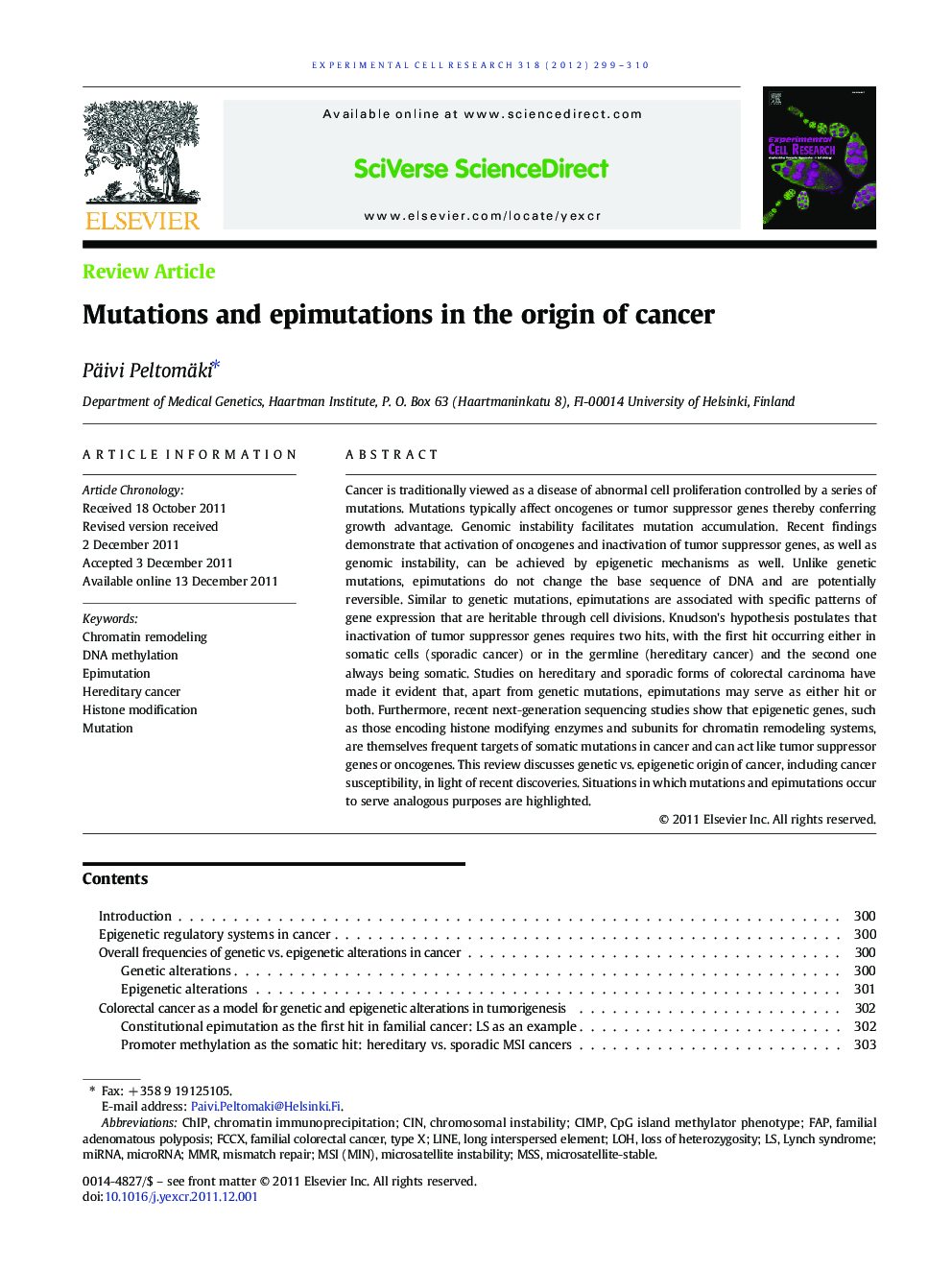| کد مقاله | کد نشریه | سال انتشار | مقاله انگلیسی | نسخه تمام متن |
|---|---|---|---|---|
| 2130782 | 1086602 | 2012 | 12 صفحه PDF | دانلود رایگان |

Cancer is traditionally viewed as a disease of abnormal cell proliferation controlled by a series of mutations. Mutations typically affect oncogenes or tumor suppressor genes thereby conferring growth advantage. Genomic instability facilitates mutation accumulation. Recent findings demonstrate that activation of oncogenes and inactivation of tumor suppressor genes, as well as genomic instability, can be achieved by epigenetic mechanisms as well. Unlike genetic mutations, epimutations do not change the base sequence of DNA and are potentially reversible. Similar to genetic mutations, epimutations are associated with specific patterns of gene expression that are heritable through cell divisions. Knudson's hypothesis postulates that inactivation of tumor suppressor genes requires two hits, with the first hit occurring either in somatic cells (sporadic cancer) or in the germline (hereditary cancer) and the second one always being somatic. Studies on hereditary and sporadic forms of colorectal carcinoma have made it evident that, apart from genetic mutations, epimutations may serve as either hit or both. Furthermore, recent next-generation sequencing studies show that epigenetic genes, such as those encoding histone modifying enzymes and subunits for chromatin remodeling systems, are themselves frequent targets of somatic mutations in cancer and can act like tumor suppressor genes or oncogenes. This review discusses genetic vs. epigenetic origin of cancer, including cancer susceptibility, in light of recent discoveries. Situations in which mutations and epimutations occur to serve analogous purposes are highlighted.
Journal: Experimental Cell Research - Volume 318, Issue 4, 15 February 2012, Pages 299–310